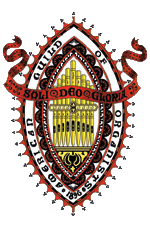Organ Masterworks During Services
Dear John: I would like to introduce my congregation to organ masterworks during the service; but to accommodate the limited available time for prelude and postlude, I feel compelled to select shorter and less substantial works. What might I do? -- Stacey Stymied
Dear Stacey Stymied,
Over the course of many centuries we find helpful indications from composers who suggested abbreviations and other modifications of their compositions to tailor them to liturgical requirements. Jean Titelouze (1563-1633), organist at the Cathedral of Rouen and composer of the earliest known publications of French organ music, in the Preface to his Magnificats writes that the organist may shorten any verset during the service by substituting the printed cadence with one on the final (i.e. tonic). According to his prefaces, Titelouze was concerned with making his pieces easier to play and playable by hands alone. He goes as far as suggesting, in the preface to Hymnes, to alter the music if it is too difficult to play!
Many other opportunities exist to extract portions of larger works for liturgical use. Thanks to Tom Spacht for his helpful suggestion that, “…probably almost too obvious are movements from any of the Mendelssohn organ sonatas, as well as the preludes and fugues which can be separated as prelude and/or postlude. Some shorter movements from Messiaen works may be selected.”
One such portion is the toccata which forms the second half of Messiaen’s Dieu parmi nous (God among us). Since the composer himself regarded the first half of this work as an introduction, the toccata, beginning in measure 60, might function as a brilliant postlude to a Christmas service. (Start to prepare it now for next December!)
Likewise with sets of variations, we might choose certain movements for particular occasions. From Marcel Dupré’s Variations sur un Noel, the concluding fugue and finale make a rousing postlude during the Christmas season.
Other French compositions which may be abbreviated successfully include Eugène Gigout, Grand Choeur Dialogué, in which one may make a cut from measure 44 to measure 67; and Louis Vierne, Carillon de Westminster, in which a cut may be effectively made from measure 34 to measure 60.
In the spirit of Titelouze and Frescobaldi, I encourage each of us to discover creative ways to present organ masterworks to our congregations within localized time constraints. Doing so will fulfill our paramount role as music educator within each of our parishes.
- John Walker
